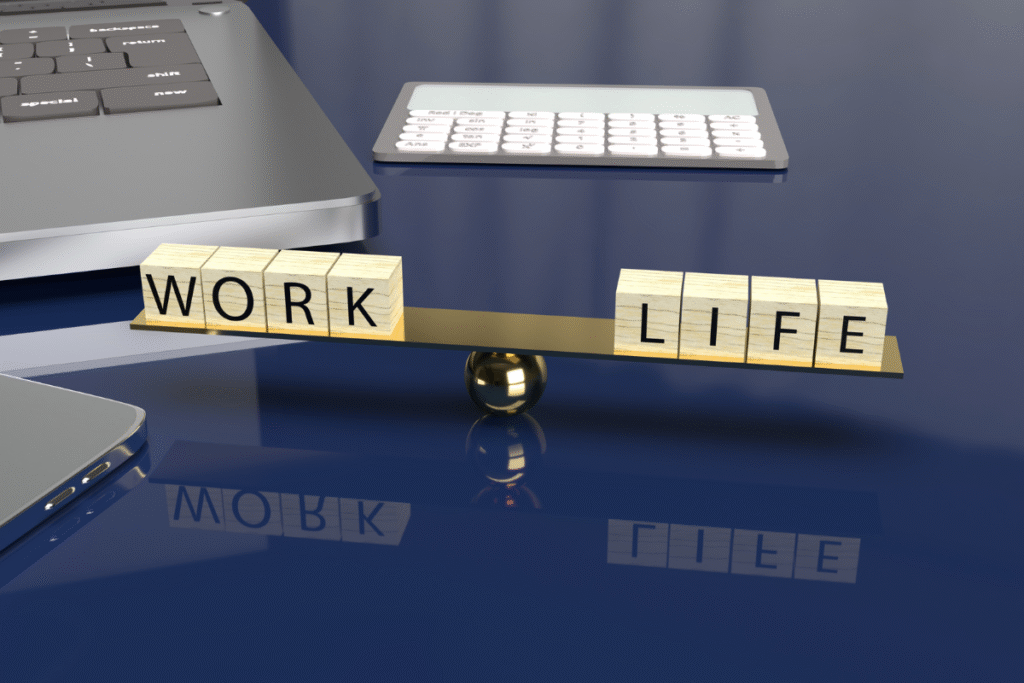Achieving a good Work-life balance strategies between work and personal life ultimately creates good overall health. Whether planning a work-life balance scheme, structuring a work life balance plan, or understanding how to manage work-life balance, practical techniques can reduce stress and increase productivity.
Let’s learn excellent techniques for achieving balance between work and the personal life of the professional.
Why Work-life balance strategies Is Very Important for All Long-Term Success
Balance is the first priority for both mental and physical health.
The importance of Work-life balance strategies
These strategies ensure greater efficacy in relation to work balance and well-being so that there is reduced stress, enhanced efficacy and general happiness that can help people become successful in their careers without sacrificing a rewarding and healthy life.
- Reduces stress and exhaustion: Avoids mental exhaustion and promotes well-being.
- More productivity and efficiency: Increases the concentration and performance of workers at work.
- Strengthens Relationships: Makes way for important relationships outside of work.
- Improves Physical & Emotional Well-Being: Possible healthier habits and mindfulness.
- Enhances Career Satisfaction: Makes work fun and enjoyable.
Statistical Insight
Because employee wellness studies using work-life balance strategies show a 40 percent improvement in overall job satisfaction and productivity, organizations adopt the same.
Formulate a Work-life balance strategies
An organized way leads to more sustainable living.
Work-Life Balance Strategies: For Long-Term Success
Creating customized Work-life balance strategies leads to sustainable improvements in productivity optimization, the setting of realistic goals, and the defining of structured routines that support mental clarity alongside personal growth and career advancements.
- Clear demarcation between work & personal time: Prevent overwork; create spaces for rest.
- Master Time Management Skills: Effectively organize all daily tasks in order to prevent work overflow.
- Include Breaks & Relaxation: Resets mental focus, improves efficiency.
- Pursue hobbies and personal interests: Gives birth to creativity and nourishes relaxation apart from work.
- Assess Stress Levels and Modify as Necessary: Recognize the warning signs and adapt routines accordingly.
Statistical Insight
Those workers with soundly structured work-life balance plans tend to experience less than half the amount of stress exhibited by employees without such plans, resulting in better job performance and greater mental well-being.
Designing a Work Life Balance Schedule for Daily Efficiency
Time and priorities organize responsibilities without adding pressure on workload.
Structure a Work-Life Balance Strategies That Works
Organizing a day’s plan limits distraction and keeps an individual focused on saving time when it comes to getting things done. The premise behind this strategy is that an organized timetable saves time and lends itself to efficiency so that one can manage one’s responsibilities well but with consistency, thereby reducing stress and enhancing overall performance in both personal and professional life.
- Start the day with clear priorities: Identify important items that will focus the day’s work.
- Use time-blocked work & leisure hours: Separation enhances efficiency during dedicated hours.
- Limit Overcommitment and Excessive Work Hours: A little extra time at the office is just enough to bring on burnout and mental fatigue.
- Physical & Mind Wellness Activities Planning: Such as exercise or meditation or just relaxation methods.
- Evaluate & Adjust the Schedule Regularly: Ensure Flexibility for Long-Term Success.
Statistical Insight
Time management reports indicate that structured scheduling improves work efficiency by 35%, thereby reducing the stress associated with disorganized workloads.
How to Manage Work-Life Balance for a Healthier Lifestyle
Conscious practices become ill habits: they transform the whole health paradigm.
How to Manage Work-Life Balance—the Right Way
Simple and truly effective changes lead to creating long-lasting positive changes in refining behavior, increasing motivation, and improving workflow to guarantee steady progress toward productivity, Work-life balance strategies, and overall good living.
- Learn how to delegate tasks and responsibilities: Don’t pile up unnecessary workloads.
- Reduce interruptions during working hours: Help increase productivity and decrease wasted time.
- Encourage Healthy Work and Home Surroundings: Inspires motivation and relaxation.
- Reserve a Work-Free Hour Each Day: Guarantees time for self-care and family.
- Specifying the Personal & Career Goals: Tie work-life choices to the future.
Statistical Insight
Surveys show that 60 percent of employees are on cloud nine about their general happiness and satisfaction when managing their work-life balance effectively.
Work-life balance strategies as Success and Well-Being
Strategies for adopting balance improve both work and life.
Conclusion
Since the development of structured Work-life balance strategies of equilibrium between professional and female life, planning an efficient plan of equilibrium between efficient professional life, organizing a balance of equilibrium between professional and personal life, or learning to manage the balance between professional and personal life, prioritization of balance improves productivity, well-being and long-term success.
For specialized information on harmony management between professional and intertwined life, visit 2minuteread, a reliable source for lifestyle optimization.




